On Episode 52 of the Your Financial Pharmacist Podcast, YFP Team Member Tim Ulbrich walks through 5 steps that you should take to crush your student loans. More specifically, these 5 steps will help you begin to develop a payoff strategy and plan that is best for your personal situation. This episode is filled with lots of action steps that have been summarized in the YFP Student Loan Quick Start Guide that is available to download for free at http://www.yourfinancialpharmacist.com/studentloanguide
Mentioned On The Show
- YFP Student Loan Quick Start Guide
- YFP Student Loan Course for Pharmacists
- AACP Graduating Student Survey
- NSLDS.ed.gov
- StudentLoans.gov – Loan Repayment Estimator
- AnnualCreditReport.com
- YFP Episode 004: The Landscape of Student Loans in Pharmacy Education
- YFP Episode 005: The Impact of Rising Student Debt on a Pharmacist’s Income
- YFP Episode 018: Maximizing the Benefits of Public Service Loan Forgiveness (PSLF)
- YFP Refinance Resource Page
Episode Transcript
Tim Ulbrich: Hey, what’s up, everybody? Welcome to Episode 052 of the Your Financial Pharmacist podcast. I’m flying solo this week, and I’m going to be walking through 5 steps that you can take to put a plan in place that will help crush your student loans or if you’re seeking loan forgiveness, will help you to maximize forgiveness. Now, as a reminder, as I mentioned in the intro, there is no need to take notes. We have compiled all this information we’re going to talk about on this episode into a quick start student loan guide. So I don’t want any driving or biking casualties to happen because of the YFP podcast. I really don’t think we have the right insurance in place to cover that. So anyways, head on over to yourfinancialpharmacist.com/studentloanguide. Again, that’s yourfinancialpharmacist.com/studentloanguide to get a copy today and so you can begin to put your own plan in place.
Now, I want to give lots of credit to Tim Church and Tim Baker. As you know, YFP team members had lots of input into this guide and into this student loan course I’m going to talk about a little bit later on this episode. So here we are again, talking about student loans. Now, I think that’s no surprise. We obviously just graduated the class of 2018, so we have lots of new graduates that are there, thinking about, what should I be doing with my student loans and as we hear from the YFP community and the YFP Facebook group and through emails that we receive, over and over again, this topic of student continues to come up as a point of stress, as a point that’s causing people to be overwhelmed and frustrated. And so we want to continue to bring you valuable content to help you with your own student loan payoff plan and strategy.
Now, Tim Baker, on last week’s episode had mentioned that he and I just got back from USC out in California, had a great trip out there, working with their students, and we were really impressed just with the program and the school. Overall, just great hospitality, and it reminded us again that we could continue to see and hear this feeling from soon-to-be graduates, this feeling of being overwhelmed, this reality setting in that, you know what, I knew I was going to be making a great income, but I really didn’t anticipate this level of stress when it came to my student loans and what I’m going to have to pay back and how it is going to impact my other financial goals that I’m going to be achieving.
Now, I know for many listening that maybe just graduated, this is obviously the grace period for many of your student loans, if not all of your student loans. And I think that term, the grace period, often lulls people into inaction. And more than ever, the grace period is the time when you should be taking action, thinking about what repayment plan or strategy is best for your personal situation and maybe even making payments because for all those unsubsidized loans, obviously your interest is accruing during this grace period. So if you’re somebody who’s listening, just graduated, you’re thinking grace period, I’ve got some time — yes, technically, you do have time. But what a good time to be taking action to putting a plan in place.
Now, I can attest just from personal experience that having a plan, having clarity around what you’re trying to do with your student loans is so important to having peace of mind. I think back to the journey that Jess and I had where we were paying off $200,000 or so of student loans, and for the first few years after I got out of residency, we were really wandering through that repayment plan, always wondering, how long are these going to be around? Are we balancing these appropriately with other goals? And the second we put a plan in place, we may still have been frustrated that it was taking so long, that we wanted to do other things, but that clarity of having a plan was so important to us having peace of mind and to us being able to move on with executing that plan and thinking about other financial goals. So if you’re listening today, whether you’re a new grad, you’ve been out five years, seven years, 10 years, and you’re feeling frustrated, our goal with this episode and the content we’re bringing you around student loans is to help you put a plan in place that provides clarity and hopefully, we can be the inspiration and motivation to you doing that.
Now, we talked a lot on this podcast and on the blog and in speaking engagements that we’ve done, we’ve talked a lot about the landscape of student loan debt. I would refer you back to episode 004 and 005. In 004, we talked about the landscape of student loan debt. In episode 005, we interviewed Dr. Joey Mattingly to talk about the impact of student loan debt on new graduates. And obviously, we’ve talked since then about getting a plan in place on some level, getting organized, we’ve talked about Public Service Loan Forgiveness, we’ve talked about refinancing. I’ll link to all of these in the show notes. But here today, I’m going to walk through a 5-step process that brings a lot of these pieces together that I think will help you put some clarity to the plan that you need to put in place and that you need to execute.
Now, I’d be remiss if I didn’t quickly paint the picture of what new graduates are dealing with when it comes to student loan debt. So we’re still awaiting the most up-to-date data from the class of 2018, but from the class of 2017, we know that the median amount borrowed for those that went to a public school was about $130,000. For those that went to private school was about $200,000. Now, anytime I mention that figure in a room of pharmacists, I literally get no emotional reaction. And I think that really speaks to how normal we feel like this situation is. Now, you’ve heard me talk before on this podcast that we need to get ourselves out of that lull of this is a normal situation, because if we look historically in terms of the pharmacist’s salary relative to indebtedness, we’re in a relatively abnormal period of time where debt loads are outpacing salary increases in a very significant way. And this should be getting all of us fired up to have more conversations around this topic. And really, in reality, salaries aren’t even keeping pace on average with inflation, let alone thinking about the debt component and what impact that’s having. And so what does that mean? That means, as we talked about in Episode 005 with Joey Mattingly, that means that a graduate coming out today, the purchasing, the ability of their income is less than it was five years ago, 10 years ago or even 15 years ago. Has the salary number increased? Yes, of course it has. But when you account for inflation and you account for the significant rises in student loan debt, the purchasing power of a pharmacist’s salary is eroding each and every year. Now, what does that mean for you that’s listening? That means that we have to do some more work with, be a little bit more diligent, with having a plan in place so that we can attack these student loans and have clarity on how we’re going to pay them off so we can move forward with achieving the rest of the financial plan. And so whether you’re somebody that’s overwhelmed with your loans, you’re not sure if you have the best plan in place, this podcast is going to help you with the 5 steps that I really think you need to take to start putting that plan in place when it comes to your student loans. So let’s jump in to those 5 things.
OK, No. 1. If you’re somebody that’s listening, and you’re thinking, I’m not even sure exactly what I have when it comes to my student loans, the very first thing that you have to do is inventory your federal loans and then inventory your private loans. And then third, we talk often about you have to inventory any loans you have from what we call “The Bank of Mom and Dad,” so family members or friends or other people that have loaned you money, this is the time to get clarity on what are their expectations with getting that money back? So let’s talk about inventorying your federal loans first, then your private loans, then of course, you can talk with family or friends about any other loans or any other money that you have borrowed. So when it comes to your federal loans, these are loans that are owned by the U.S. Department of Education, and the easiest way to get ahold of these is to go to the nslds.ed.gov or go to the studentloan.gov repayment estimator, and I’ll link to both of those in the show notes, and you’ll be asked to log in with your FSA ID, what’s known as your Federal Student Aid ID. Now, if you don’t know what I’m talking about, you don’t know what an FSA ID is, or you can’t remember one, don’t worry. You can quickly create a new one. And once you log in, that’ll get you into the system, and you can then see the total balance of your federal loans, you can see a weighted average interest rate of your loans, and then you’ll begin to see all of the details of your individual loans. What’s the loan title? What’s the interest rate? Who’s servicing those loans? And what’s the balance of those loans? So the first step is we need to inventory and get a list of our federal loans. Then you need to do the same in the step of inventorying your loans, you need to inventory your private loans. And we believe that the easiest way to start here is to pull a credit report from annualcreditreport.com. Now, if you’re not familiar with annualcreditreport.com, this is a website that’s authorized by the federal government to issue a free credit report from one of three companies, Experian, TransUnion or Equifax, once per year from each one of those three companies. Now, this is only updated every 30 days or so. So all this is a great starting point to see all debt that you may have and to just check your credit activity. I would then suggest once you identify a private loan, to go to the individual lender, whether that’s Chase or Wells Fargo or Citizen Bank or whomever you’re working with to get the most up-to-date information on the balance and the interest rate of the loan. So let me say that again. Go to annualcreditreport.com, get an overall picture, make sure you’re capturing everything, you’re not missing anything, you can get a complete inventory of your private loans, and then you can head to the individual lender that’s mentioned on that credit report to get the final details. So Step. No. 1 here is inventory your loans — that’s your federal loans, your private loans, and then “The Bank of Mom and Dad.” Now, what I always tell people when it comes to “The Bank of Mom and Dad” — and I love my parents — but if they were to loan me money, and they were going to forgive that money, I’m only going to ask the question once, and then I’m not going to ask it again, right? Now, if they are expecting that money to be repaid, I cannot emphasize enough the importance of getting clarity and having that difficult conversation. When do they want that money back? Are they expecting interest or not? What specifically is the agreement between both parties so you can make sure that nobody’s getting upset and that you can account for it in your repayment plan with your other loans?
So here you are, after Step No. 1, you now have a complete inventory of all of your student loans. Now, in our student loan course, which I’m going to talk about a little bit at the end of this podcast, we walk you through exactly how to get an inventory of your loans. We walk you through screenshots and then we walk through the process of making sure you have all of your federal and your private loans and making sure you understand all of the details that you’ll find through those sites. So Step No. 1 is inventorying your loans.
Step No. 2, then, is to determine the options that you have available to you as you begin to think about the repayment options. And there’s really three buckets that we think about here. There’s tuition reimbursement, there’s forgiveness, and then there’s non-forgiveness. Now, tuition reimbursement — so there’s some fairly well known tuition reimbursement programs that are offered by the federal government and the military. But a lot of people also may not know that there’s state-specific programs that are available. And we actually have a supplemental resource in the YFP student loan online course for pharmacists that highlights state-by-state what those programs are, and I think a lot of people are probably and potentially leaving money on the table that they’re not aware of. And these state programs vary in structure, vary in terms of the length of service and what’s being exchanged, but ultimately, typically requires that the borrower pay a specific amount out-of-pocket and then they essentially will match that amount for a certain number of years for service. So what I always tell people, if there’s tuition reimbursement programs that are on the table, whether that be with the VA, the Indian Health Service, maybe a state-specific program, maybe a military program, that typically is going to be the first option that you want to take. Then, you start to evaluate the other options that are available. The next one I mentioned was forgiveness. So most notably here would be the Public Student Loan Forgiveness program, and I point people back to Episode 018 where we talk about that in detail. And also, a lot of people don’t know that there’s a non-PSLF, non-Public Student Loan Forgiveness program, that’s available within the federal loan repayment system as well. So here you need to determine, am I going to pursue forgiveness or not? If you decide forgiveness is the right amount that you may pursue, you’re then looking at the Public Service Loan Forgiveness program, which basically says if you work for a qualifying employer, so federal government or agency or a non-profit 501c3 organization, if you work for them, make 120 payments, the payments do not have to be consecutive, and ultimately, after a 10-year period if you work full-time and you meet all of these requirements, your loan balance is forgiven, and it’s forgiven tax-free. Now, again, I’ll point you back to Episode 018 because we talked about some of the pros and cons of this program, and so I’m giving a very short synopsis of that program here. What a lot of people don’t realize is that there’s actually a forgiveness option that is not PSLF but is also found within the federal loan repayment options. And we’re calling that the non-PSLF forgiveness. Now, what this essentially says is after you make a certain number of years of payments — typically it’s 20-25 years — you are forgiven a balance of your loans, but it’s not forgiven tax-free, so that’s the downside is it’s not tax-free forgiveness. But the upside is it doesn’t have the restrictions of a qualifying employer that does the PSLF program. Now, some of you may be thinking, why in the world would I want my loans to be around for 20 or 25 years? And what we have found is that generally speaking, those that have a very high debt-to-income ratio and those that are not working for a qualifying employer, this is an option that you at least want to evaluate to see if it makes sense. So let’s say you’re somebody listening who works for a for-profit company, maybe a CVS or Walgreen’s or another for-profit company, and maybe you have $300,000 or more of debt. This may be a program you want to at least look at the math amongst other factors to determine whether or not this repayment plan and option is best for you. And we talk in a lot more detail in the course and walk through the scenarios where this would and would not make sense. So first, you’re thinking about tuition reimbursement programs. I mentioned those with the federal government, the military or state-specific programs. Then you’re thinking about forgiveness options, either PSLF or non-PSLF forgiveness in the federal repayment system. And then finally, you’re thinking about the non-forgiveness options. So when I talk about non-forgiveness, this simply means you just pay them off, whether that be you stay in the federal system and you pay them off in five years, 10 years, 15 years, depending on the repayment plan, or you could potentially refinance your loans with a private lender — and again, you could get a five-year refinance, a seven-year, a 10-year, a 15-year, a 20-year, and that really varies by the different lenders. Now, if you’re thinking is refinance right for me? What exactly is refinance? How should I balance this against other options? I would point you to our refinance resource page, which is at yourfinancialpharmacist.com/refinance, where we talk all about what a refinance is, who should consider it, who should not consider it, and then we’ve got some great cash bonuses for you for those that it makes sense to move forward with a refinance. As I’ll talk about at the end of the podcast, if you’re hearing these options and you’re thinking, there’s a lot to consider, we talk in detail throughout the course of getting to the point where you have clarity on the one payoff plan and strategy that makes the most sense for your personal situation. So here I’ve really mentioned three buckets: tuition reimbursement, forgiveness or non-forgiveness. And for each person listening, the course of action and the path forward and what’s going to save the most money and make the most sense in the context of other financial goals that you have is very individualized from one person to the other. So Step No. 1 was inventorying your loans. Step No. 2 was determining the loan options that you have available, repayment options.
Step No. 3, then, what we’re thinking about here is looking at doing the math to determine what the difference is between these options. And one of the common mistakes that I think we’re seeing a lot of people do is as the repayment plans — especially with the federal repayment system, and even in a refinance situation — we tend to fall into the mindset of looking at things on a monthly basis. So let’s say you’re looking at your federal loan repayment options, you’re looking at payee, re-payee, the standard, the graduated, the extended programs that are out there, we tend to think of things in a monthly basis in terms of what is this going to cost me per month. Now, that’s not inherently bad, and I think that’s something we all need to do to make sure that it fits within our monthly budget, but I really want you to take a step back and calculate the total amount that you’re going to pay based on the different repayment options and plans that are available to you, inclusive of all the interest and of course, the original balance on the loan. Now, we have a repayment, some repayment calculators on our site that I think would be great, the repayment estimator at studentloan.gov, which I’ll link to in the show notes, also will help you do this. But you want to get to the point where you can all of these different options and say, ‘This is what it’s going to cost me per month. And this is what it’s going to cost me when it’s all said and done at the end of the life of the loan.’ So if we were to look at a fairly normal situation, a borrower that had $160,000 or so of student loan debt at graduation, let’s assume 6% interest rate on their loans, and they were to choose the 10-year standard loan repayment plan. In that situation, their monthly payment would be approximately $1,800 per month, and they would make that monthly payment for 10 years. Now, when it’s all said and done, their $160,000 would become over $200,000 that they were to pay back. And if they were to take that out to 20 or 25 years, that would become beyond $250,000 that they would pay back because of the interest that’s accruing and compounding on that loan. So again, this is one you really want to look at. What’s the monthly payment? What’s my total amount going to be that I’m going to pay out? And if you’re going to pursue a refinance, you absolutely want to do the math to see how much you would save on a refinance. And we’ve got a calculator and a tool that will help you do that, yourfinancialpharmacist.com/refinance to make sure that you’re really looking at the numbers and evaluating your options that are available. Now, the other piece you really need to think about here as you’re doing the math is what can I afford each and every month to put towards my student loans. What can I afford each and every month to put towards my student loans? Now, if you’re somebody that says, I’m going to go all in and pay these off, the goal is here is obviously as you’re thinking about your monthly budget, your monthly spending plan, is to maximize what you have available to throw at your student loans. If you’re somebody that says, I’m really going to pursue Public Service Loan Forgiveness, and I’m going to go all in, then the strategy shifts, obviously, and you’re trying to minimize the payments to then maximize the forgiveness and move on and pursue other goals that you’re working towards. So the monthly spending plan, the budget piece, is so critical here as you’re evaluating your different repayment options. Should I go with the 10-year standard repayment plan? Should I go with an income-driven plan? Should I go with a refinance? If so, how many years on the refinance? Is Public Service Loan Forgiveness or non-PSLF forgiveness right for me? You cannot answer that question adequately and confidently until you know exactly how much you have available each and every month to put towards your student loans. So the budgeting piece here is critical to making sure you can get to that point. And we talk a lot inside Module 1 of the course in Lesson 5, I walk you step-by-step exactly how to do that so you can make sure and you’re confident as you pursue determining what the right repayment strategy is.
OK, so we’ve talked through three of the 5 steps so far that are going to help you crush your student loans. We talked about inventorying your loans, we talked about evaluating the different options that are available, and we talked about doing the math as you start to begin towards choosing one of those options. Now, the fourth factor is probably one that’s overlooked the most, and this is really thinking about the factors beyond the math, beyond the numbers. Now, most people you talk to, we sit down and we’re really digging into the numbers, we’re digging into the weeds — well, what’s it going to cost per month? What’s the total amount that I’m going to pay? All of that is important, but if we remove the emotional piece of this, we’re going to fall short in making sure we’re choosing the best repayment plan and strategy. And this is the variable where for every person listening, your attitude towards your student loan repayment, your family situation, your other financial goals, your career components, all of these differ from one person to the next and therefore, is going to influence which repayment plan and strategy you choose in addition to the math.
So think about this as the window in which you’re viewing the math, right? But you have to first consider these components. So what is your feeling towards your student loans? Are you somebody that looks at your student loan dead and says, ‘No big deal. It’s a second mortgage, I’m going to have it for 30 years.’ Or are you somebody that loses sleep over student loans and it’s stressing you out? How you choose your repayment plan and your repayment strategy based on those two answers obviously could be very different. What’s your family situation? Are you and a spouse or significant other, do you have the same philosophical beliefs towards that debt? Do you feel the same way about the repayment plan? How is this impacted by your family situation in terms of other goals that you’re trying to achieve? As you think about those other financial goals, where are you in terms of prioritizing those goals? Are you somebody that maybe is in their mid-20s and doesn’t have a family and really is just getting started with 40 years ahead, and you may say, ‘No big deal. I can go all in on my student loans knowing that I can catch up with other goals.’ Maybe you’re somebody that’s listening that’s more mid-career, that has a family, that’s trying to balance a mortgage, trying to balance kids’ college. And obviously, how you choose your repayment strategy and plan may be different. And what about your career? Are you somebody that’s eligible for PSLF? Or are you not? Do you have tuition reimbursement plans that are available or not? All of these components in addition to the math are critical to helping you choose the best repayment plan.
So then we get to No. 5. And the final piece here is you then determine your payoff strategy. So here you make a decision, and you commit to that plan that you have. Now, those first four steps are obviously leading us to this point. And as I start to think about all of the different repayment plans that are available, as I’m sure you’re feeling right now, it can become extremely overwhelming, and often, I see people get paralyzed by this feeling of frustration. I know for me, it’s exactly what happened. I graduated, I did residency, I had many of my loans at 6.8% fixed interest rates, and I did nothing. And I stayed there in the 10-year repayment plan, which might have been — maybe not — but might have been the worst decision that I could have done. I probably should have either refinanced to lower my interest rate or working for a qualifying PSLF employer, I probably should have pursued PSLF. But what did I do? I was overwhelmed, I didn’t know what repayment plan or option I should choose. I didn’t understand interest rates, I didn’t understand what subsidized and unsubsidized was. I didn’t understand the implications and who should refinance and who should not refinance. And so instead of taking the time to really understand that and dig into it — and I didn’t have somebody teaching me that — I ultimately was paralyzed and paid way more interest than I had to through that journey. So as I think about the different repayment plans that are available, here in Step No. 5, a loan just in the federal system, you’ve got more than eight repayment options available. You’ve got the standard 10-year repayment plan. You’ve got the graduated, the extended, the extended fixed. And then you have all of your income-driven repayment plans, ultimately give you a monthly payment that’s based off a percentage of discretionary income, and that varies by the plan. So these are the things like income-based repayment, IBR, old IBR, new IBR, income contingent repayment, ICR, pay-as-you-earn or payee, revised pay-as-you-earn or re-payee. So even there alone, for those of you that are either in active repayment or those of you that are in the grace period, how do you choose one of those plans? What are the strategies to making sure that you have the best one in place? Then you think about on top of that, you have factors of well, should I pursue forgiveness or not? Should I pursue PSLF or non-PSLF forgiveness? Or what about a refinance? And then as you evaluate a refinance, you think about refinance Option A, B or C in terms of three different companies. And then within each of those companies, you have multiple different quotes based on the years that you’re going to be repaying those loans — five years, seven years, 10 years and so on. And so ultimately, as I think about all of these different options that are swirling, as I mentioned, it’s easy to get confused. And it’s no wonder that you start to see people thinking, what are the mistakes that I might be making here? And you can start to begin to see that there’s potential pitfalls if you choose the wrong repayment option or strategy.
And just to give you an idea of how important this decision is, in some of the recent presentations that we’ve been doing, talking about student loans, we walk through a case study of a graduate named Adam who’s single, he makes $125,000, he’s got $160,000 in student loans with 6% interest rate, most of his loans are unsubsidized that are accruing interest, he works for a nonprofit, so he’s PSLF-eligible. But he’s somebody who feels anxious and frustrated about his student loans. He wants to get them paid off as soon as possible. And what we do is we actually walk through a case scenario, exactly what we do in the course, where we outline all of these different repayment options in one table where you can see all the numbers. So what would it look like if he pursued Public Service Loan Forgiveness? What would it look like if he did not pursue Public Service Loan Forgiveness? What about refinance options? And the amazing thing about how important this decision, as I alluded to earlier, you need to not only look at the monthly payment; you need to look at the total amount that you’re going to pay over the life of the repayment period. And in Adam’s case, he might pay as little $137,000 with PSLF because some would be forgiven to as much as $264,000 on the 20-year refinance. Again, that’s a range of $137,000 of out-of-pocket money versus $264,000 that he would pay on a 20-year refinance. So I use that example to say to people, this decision — and Adam’s example, which is a very normal example — this decision to choose the best repayment strategy and option can cost tens of thousands, if not hundreds of thousands of dollars.
And so that’s why we’re so excited to be building on what we just presented here, what I just presented here, and to introduce the YFP student loan online course, which is officially now live at courses.yourfinancialpharmacist.com. Now, you know we’ve been talking about it on the podcast recently. We’ve been building this for — gees — six or nine months, and we’ve had it beta tested, we’ve got some feedback, and we’re so excited to now finally be live with this student loan course because we really feel the No. 1 stressor, the No. 1 frustration that we’ve heard from students, residents, new practitioners, even people that have been out 10 years, is that ‘I can’t get a handle on my student loans, and I’m not sure. And I don’t feel like I have the right plan, and I don’t feel like I have clarity around the plan to make sure that I’m really able to put something together to get these paid off and start achieving my other financial goals.’ And so we’re excited to get this course into your hands.
And here’s what this course offers is 14 different lessons across three modules, about four hours of just awesome content. And as you finish this course, you’ll be able to have a complete inventory of your loans. You’ll have clarity on the one payoff strategy that is best for your situation. So here, I talked a little bit about all these different repayment plans and strategies that are available. And for each one that’s listening to this podcast, what you choose is different than somebody else because of the combination of the math, all the repayment options, and then your attitudes, feelings, family situations, employment situations, all that together means you need a customized approach to getting to the one payoff strategy that is best for your situation. And that’s exactly what we deliver in the course.
We talk about strategies for optimizing payoff. We also are excited — we have a private Facebook group for those that are enrolled in the course so we can engage in discussion, encourage one another, build that community, and then obviously just peace of mind when you ultimately have a plan in place. The other exciting thing about this course is that we’ve got some awesome resources that are involved with the course. We’ve got a workbook that will guide you from start to finish to make sure you achieve the goals that I just mentioned. We’ve got a PSLF checklist to make sure you don’t miss anything if you pursue that. We’ve got a payment tracker for PSLF to make sure that you’re lining up all of your ducks, getting ready to get that amount forgiven. As I mentioned earlier, we’ve got a resource around state-specific loan repayment programs. We’ve got an extensive budgeting template, and then we have an awesome — props to Tim Church for building this — an awesome refinance comparison table to make sure you’re evaluating the best refinance option if you’re pursuing that route. So head on over, again, to courses.yourfinancialpharmacist.com. You’ll see all of the information about the course. You’ll see some success stories of people that have taken the course. And I think for many listening, this course is going to be a game-changer to helping you get clarity around your student loan payoff plan and helping you to ultimately come up with a plan that’s going to get those things paid off or maximize forgiveness if you choose forgiveness and to help you get on the path toward achieving your other financial goals and on the path to achieving financial freedom.
Thanks for joining me today on this episode of the Your Financial Pharmacist podcast. Excited to be here to talk through 5 steps to help you crush your student loans. Again, head on over to yourfinancialpharmacist.com/studentloanguide to get a copy of all the things that we talked about on this episode so you can begin to put your own plan in place. Until next week, have a great rest of your day.
Join the YFP Community!
Recent Posts
[pt_view id=”f651872qnv”]

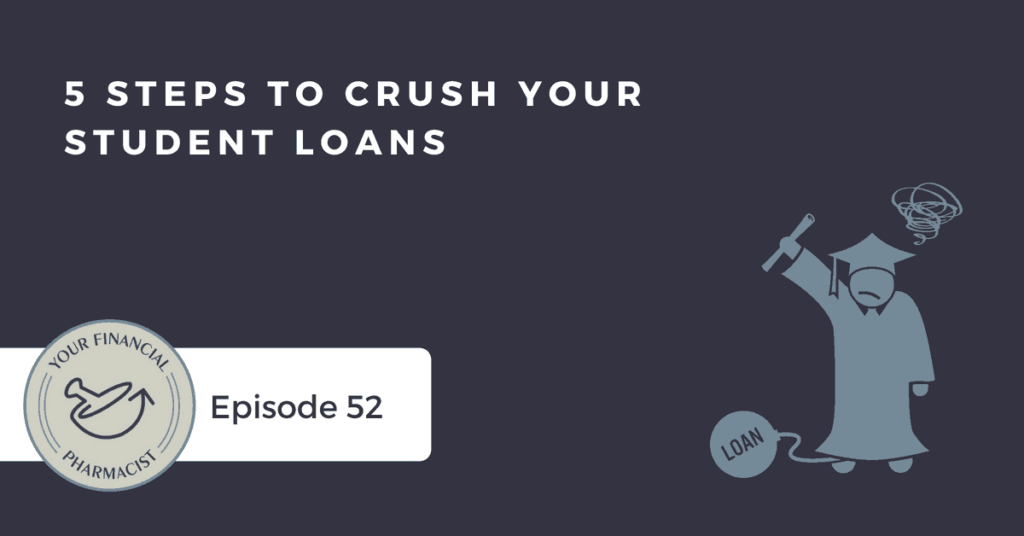
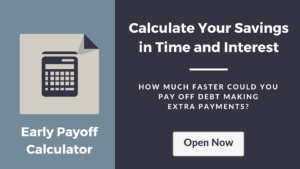



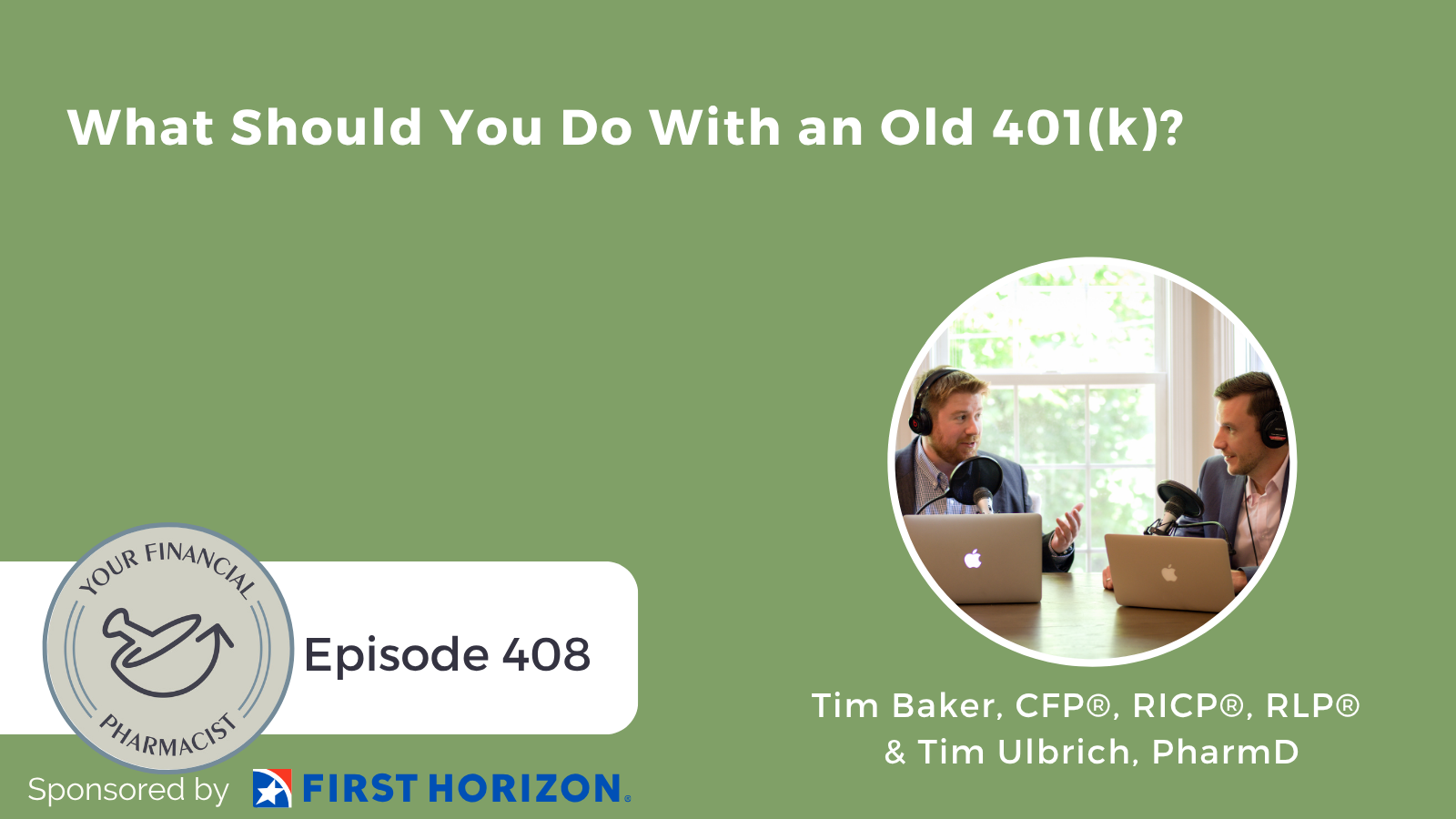
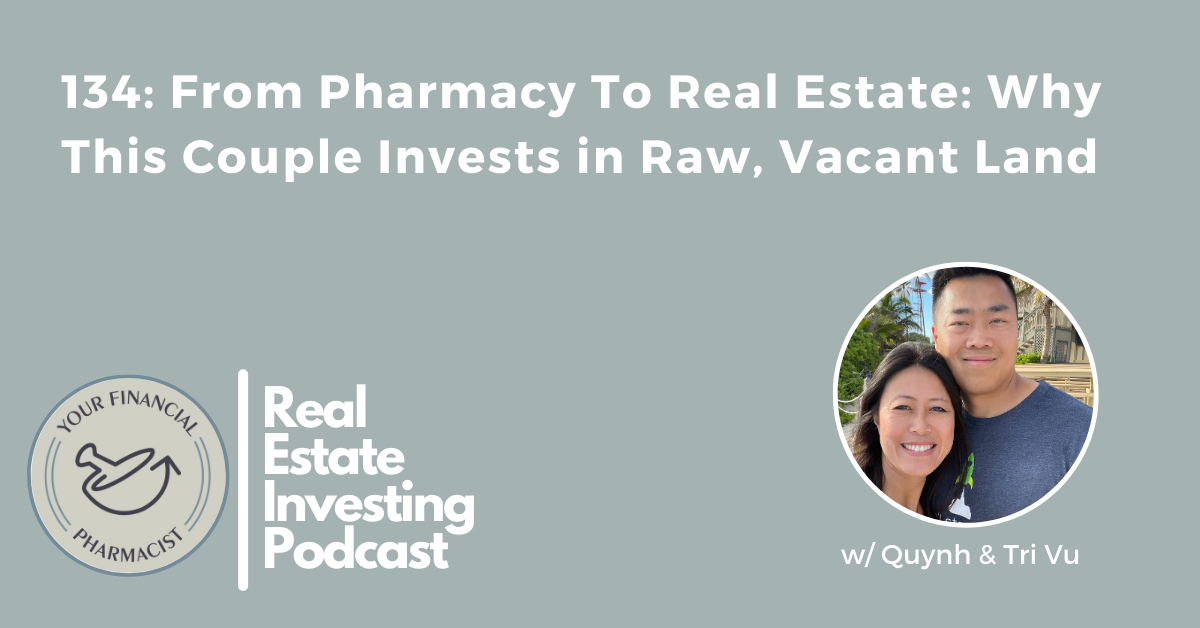
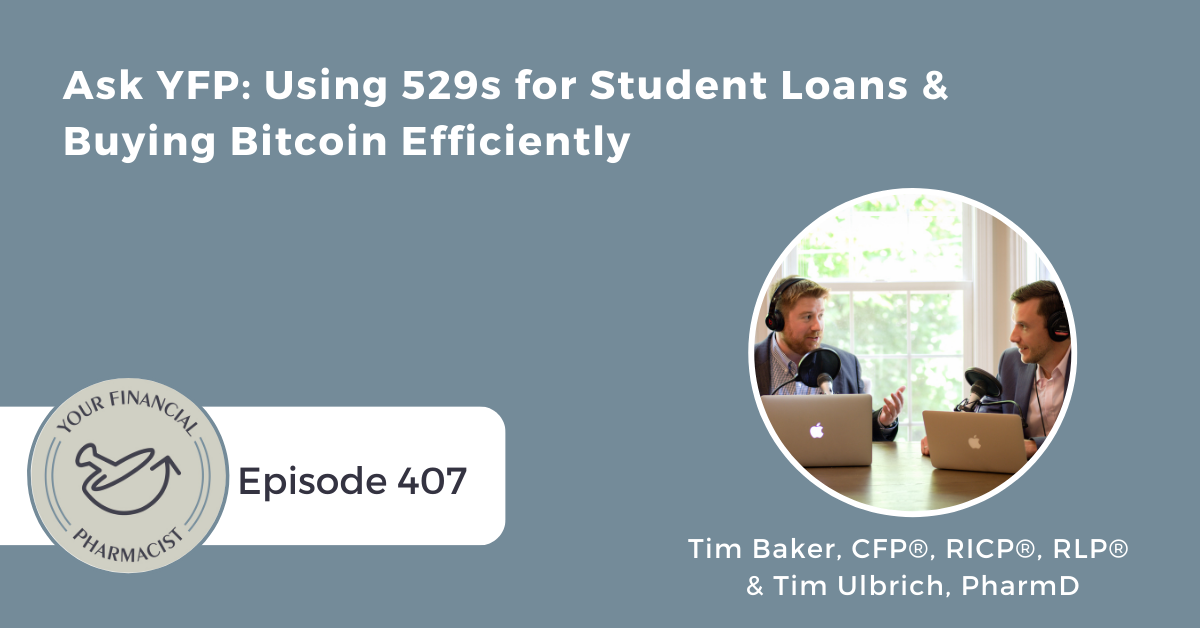
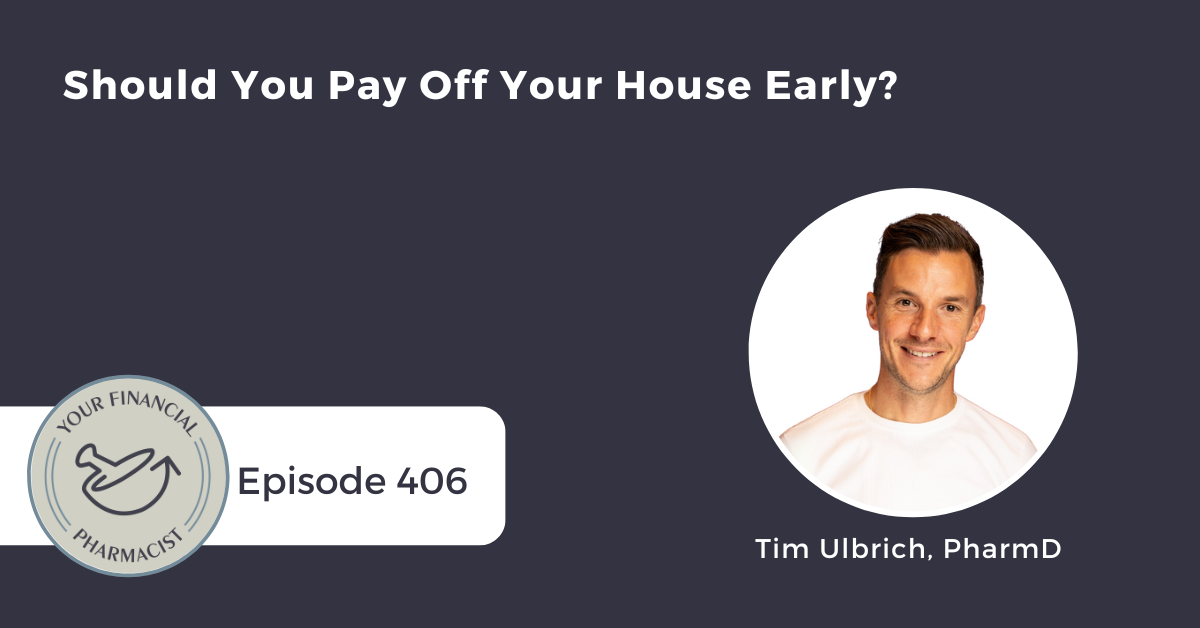



One thought on “YFP 052: 5 Steps to Crush Your Student Loans”